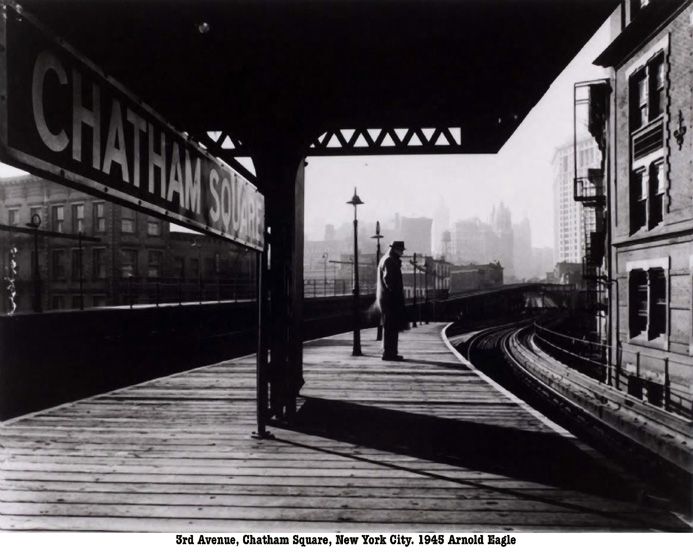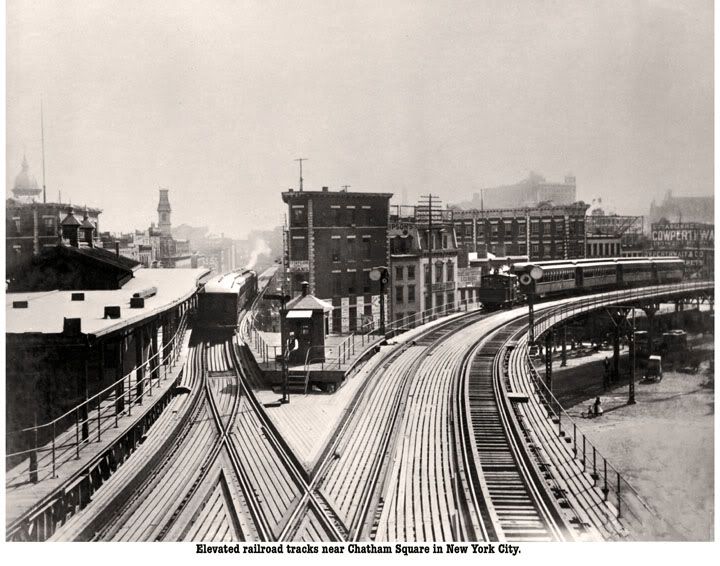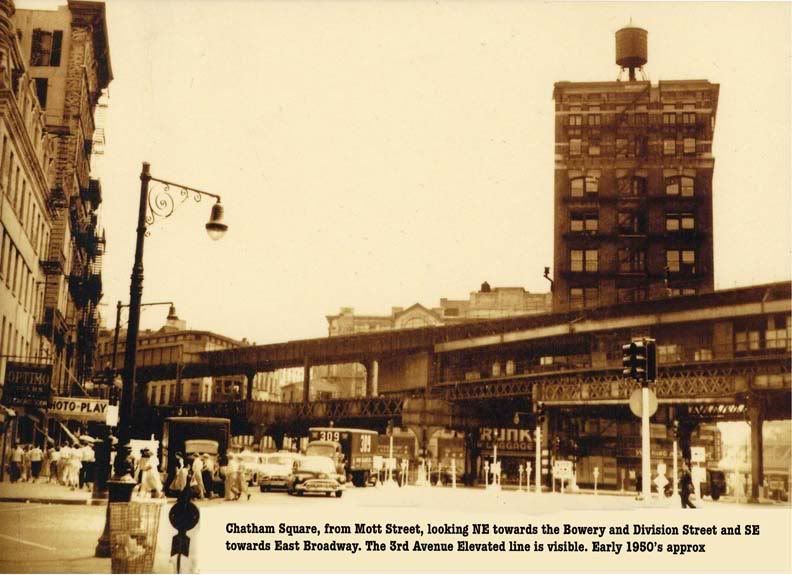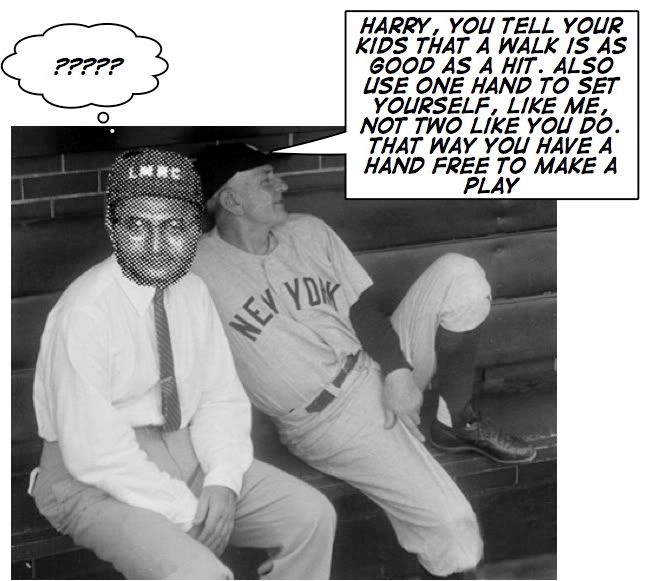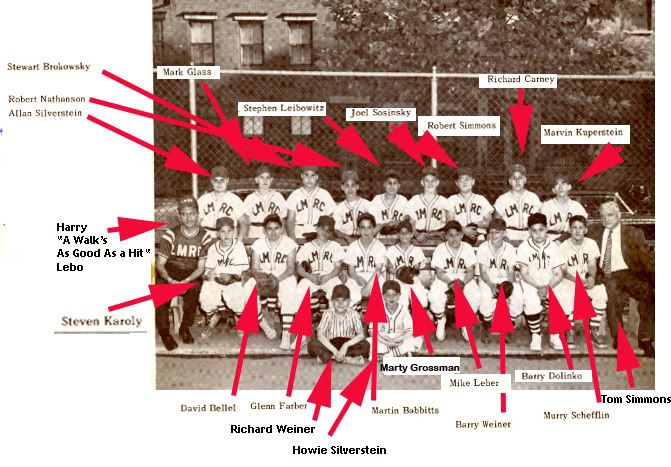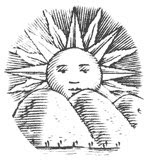
Sunday, May 31, 2009
The Debate Over The El 1950
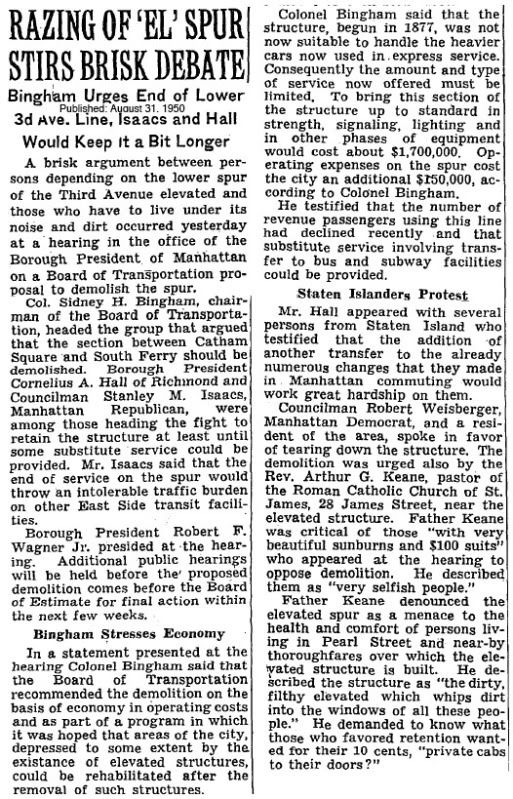
Looks like our Councilman Robert Weisberger, who also lived in KV came down on the correct side of this issue which pitted the upper class that enjoyed the convenience of traveling to Wall Street against the working classes that had the noisy and dirty trains cutting through their neighborhood.
Labels:
chatham square,
elevated railroad,
nytimes,
robert weisberger,
Ward 4,
ward 6
Oliver Street Used To Be Fayette Street
Thursday, May 28, 2009
Jack Kirby's WW2 Experiences
kirby-ww2
Gives one an understanding of some of his work in the Sergeant Fury comic series rom he previous post
Gives one an understanding of some of his work in the Sergeant Fury comic series rom he previous post
Sergeant Fury Comics
sgt-fury
Sergeant Fury was one of the works of King Kirby from the Lower East Side
Publish at Scribd or explore others:
Sergeant Fury was one of the works of King Kirby from the Lower East Side
Sgt. Fury and his Howling Commandos are a fictional World War II unit in comic books published by Marvel Comics. Created by Stan Lee and Jack Kirby, they first appeared in Sgt. Fury and his Howling Commandos #1 (May 1963). The main character, Sgt. Nick Fury, later became the leader of Marvel's super-spy agency, S.H.I.E.L.D..
In addition to Fury, the elite special unit of US Army Rangers nicknamed the Howling Commandos consisted of
* Corporal Thaddeus Aloysius Cadwallander "Dum Dum" Dugan,
* Private Gabriel Jones (an African American serving in an integrated unit, though the U.S. armed forces were not in real-life integrated until after the war, in 1948)
* Private Robert "Rebel" Ralston,
* Private Dino Manelli (modeled after Dean Martin),
* Private Isadore "Izzy" Cohen (the first demonstrably Jewish American comic book hero),
* Private Jonathan "Junior" Juniper — who, in an unusual and daring move for comics at the time, was killed in action after a few issues (#4, Nov. 1963).
* Private Percival "Pinky" Pinkerton, a British soldier, replaced Juniper in issue #8 (July 1964).
* Private Eric Koenig, a defector from Nazi Germany, joined the squad in issue #27.
Occasional other members would join for an issue or two before being killed, transferred, or otherwise leaving (such as Fred Jones in issue #81). Also daringly for the time, the series killed Fury's girlfriend, British nurse Pamela Hawley, introduced in issue #4 and killed in a London air raid in #18 (May 1965).
Stan Lee has described the series Sgt. Fury and his Howling Commandos as having come about due to a bet with his publisher, Martin Goodman that the Lee-Kirby style could make a book sell even with the worst title Lee could devise.[2] Lee elaborated on that claim in a 2007 interview, responding to the suggestion that the series title did not necessarily seem bad:
“ It did at the time. First of all, it was too long for a title — we didn't have any that were six words. And 'Howling' was a long word, and 'Commandos' was a long word. I got the name 'Howling Commandos' because in the Army there was a group called the Screaming Eagles. And I loved the sound of that. So I figured we'd have the Howling Commandos. ”
Comics-artist contemporary John Severin recalled in an interview conducted in the early 2000s that in the late 1950s, Kirby had approached him to be partners on a syndicated, newspaper comic strip "set in Europe during World War Two; the hero would be a tough, cigar-chomping sergeant with a squad of oddball GIs — sort of an adult Boy Commandos", referring to a 1940s wartime "kid gang" comics series Kirby had co-created for DC Comics.
Sgt. Fury and his Howling Commandos followed an elite special unit, the First Attack Squad, nicknamed the "Howling Commandos," which was stationed in a military base in England to fight missions primarily, but not exclusively, in the European Theatre of World War II. Under Captain "Happy Sam" Sawyer, Fury was the cigar-chomping noncom who led the racially- and ethnically-integrated unit. The series ran 167 issues (May 1963 - Dec. 1981), though with reprints alternating with new stories from issue #80 (September 1970), and only in reprints after issue #120 (July 1974). Following several issues by creators Lee and Kirby, penciller Dick Ayers began his long stint on what would be his signature series; John Severin later joined as inker, forming a long-running, critically-acclaimed team. Roy Thomas followed Lee as writer, himself followed by Gary Friedrich, for whom this also became a signature series.
Friedrich began as a co-scripter of issues #42-44 (May-July 1967). The Friedrich-Ayers-Severin team began in earnest, however, with #45 (Aug. 1967), the first of what would be several of the series' "The" stories: "The War Lover," a shaded exploration of a trigger-happy soldier and the line drawn, even in war, between killing and murder. Daring for the time, when majority public sentiment still supported the undeclared Vietnam War, the story balanced present-day issues while demonstrating that even in what is referred to as "a just war," a larger morality prevails. While war comics at this stage were less overtly jingoistic than in the 1950s, Friedrich's allegorical approach was ahead of movies and television as well, occurring years before M*A*S*H would tread similar ground. Friedrich's story also marked the first time since the early Lee-Kirby Furys that such provocative humanism appeared in a full-length comic-book tale, rather than in the occasional "very special" short stories that represented the preferred length at rival DC Comics. Subsequent "The" stories included "The Assassin", "The Peacemonger", and the un-romanticized AWOL drama "The Deserter" (#75, Feb. 1970), based loosely on the real-life case of WWII Private Eddie Slovik. The story "The Man who Failed" tells how the British member of the squad had wasted an inheritance and was redeeming himself on the battlefield.
Friedrich continued through #83 (Jan. 1971), with the late part of this run having reprint issues between new stories, and again for the even-numbered issues from #94-114 (Jan. 1972 - Nov. 1973).
Sgt. Fury ran concurrently with two other, short-lived Marvel World War II series, Capt. Savage and his Leatherneck Raiders (later titled Captain Savage and his Battlefield Raiders), which lasted 19 issues from 1968-1970; and Combat Kelly, which lasted nine issues from 1972-1973. The Howlers guest starred in #6 and #11 of the former series, and #4 of the latter.
[edit] Fictional character biographies
Sgt. Fury #57 (Aug. 1968), featuring a Friedrich "The" story. Cover art by Ayers & Severin
Nicholas Joseph Fury was the eldest of three children born to Jack Fury. His father was a United States citizen who enlisted in the United Kingdom's Royal Flying Corps during World War I. Jack had enlisted in 1916, and later stationed in France. Given the rank of lieutenant, he reportedly shot down Baron Manfred von Richthofen early in the Red Baron's flying career, and was a highly-decorated combat aviator by the end of the war in 1918.
Discharged after the War, Jack returned home, married an unnamed woman, and became father of three children. Jack's first wife died when Nick was a very young child; Jack married again, but shortly afterward the second Mrs. Fury also died, while Nick was in childhood.[5] Nick, probably born in the late 1910s or early 1920s, was followed by Jacob "Jake" Fury (later the supervillain Scorpio, who co-founded the Zodiac cartel), and their sister, Dawn.
All three children grew up in the neighborhood known as Hell's Kitchen in Manhattan, New York City, New York. Nick was an amateur boxer. With his friend Red Hargrove, he eventually left the neighborhood to pursue his dreams of adventure, eventually settling on a daring wing-walking aviation act. Their death-defying stunts caught the attention of Lieutenant Samuel "Happy Sam" Sawyer when Fury and Hargrove were training British Commandos in low-level parachuting. Sawyer was serving with the British Commandos in 1940 and underwent training by Fury. Sawyer enlisted them for a special mission in the Netherlands. [6] Nick and Red later joined the U.S. Army, with Fury undergoing basic training under a Sergeant Bass at Fort Dix in New Jersey. Both Fury and Red were stationed at Schofield Barracks, Oahu, Hawaii when the Imperial Japanese Navy attacked the base on December 7, 1941, and Red was among the many killed in the attack on Pearl Harbor.
Sawyer, now a captain, recruited select U.S. Army Rangers to his "Able" Company. Sawyer assigned Fury the command of the First Attack Squad, nicknamed the "Howling Commandos." Utm and the Second Attack Squad (the "Maulers", led by Sgt. "Bull" McGiveney, with Cpl. "Ricketts" Johnson),[8] and, later, Jim Morita's Nisei squad[9] were stationed in a military base in England to fight specialized missions, primarily, but not exclusively, in the European Theatre of World War II, eventually going as far afield as the Pacific Theatre, Africa, and, once each, in the Middle East and on the Russian front. Fury fell in love with an English nurse, Pamela Hawley, who died in a bombing raid of London before he could propose to her.
The Howling Commandos' earliest (but not first-published) assignment occurred in the autumn of 1942. They were to recover British rocket scientist Dr. MacMillan from a German military base in occupied Norway. Their success brought the attention of British Prime Minister Winston Churchill, who incorporated the unit into the British Army, and given the title of "Commandos".
The Howlers fought against the likes of German General Erwin Rommel and inter-squad bigotry, often in the same story. Antagonists included Baron Strucker, Captain America's nemeses Baron Zemo and the Red Skull (Adolf Hitler's protégé), and other Axis villains. The Howlers encountered Office of Strategic Services agent Reed Richards (later Mister Fantastic of the Fantastic Four) in issue #3 (Sept. 1963), and fought alongside Captain America and Bucky in #13 (Dec. 1964).
They reunited for missions in the Korean War, where Fury received a field promotion to lieutenant, and the Vietnam War, each in a summer-annual special, as well as at a present-day, fictional reunion gala in issue #100 (July 1972).
KV Historical Comics 1
Beer Comics
Our first issue of KV comics. I used in the "Road To KV tale" of Rubin Beer, Bruce and Nancy's grandfather
Our first issue of KV comics. I used in the "Road To KV tale" of Rubin Beer, Bruce and Nancy's grandfather
Wednesday, May 27, 2009
John Lamula
John Lamula
Thanks to Natalie Sosinsky I got a copy of an out of print 1960 publication made for a testimonial for John Lamula. I scanned some of the pages. Some of the people who live in Knickerbocker are not aware of the reason that John Lamula Square, on Market and Monroe, was named for him
Publish at Scribd or explore others:
Thanks to Natalie Sosinsky I got a copy of an out of print 1960 publication made for a testimonial for John Lamula. I scanned some of the pages. Some of the people who live in Knickerbocker are not aware of the reason that John Lamula Square, on Market and Monroe, was named for him
Monday, May 25, 2009
Manhattan 1929
Ruth Tester and Allan Gould do the singing. The clip is from "Makers of Music," an obscure short that featured Rodgers and Hart in the cast. "Your bathing suit so thin... Will make the shellfish grin."
Manhatta 1920
from city skip
In 1920 Paul Strand and artist Charles Sheeler collaborated on Manhatta , a short silent film that presents a day in the life of lower Manhattan. Inspired by Walt Whitman's book Leaves of Grass , the film includes multiple segments that express the character of New York. The sequences display a similar approach to the still photography of both artists. Attracted by the cityscape and its visual design, Strand and Sheeler favored extreme camera angles to capture New York's dynamic qualities. Although influenced by Romanticism in its view of the urban environment, Manhatta is considered the first American avant-garde film.
The Mannahatta Project 3
manhatta
I made a pdf of screen captures from the Mannahatta Project's site where I zoomed in on the KV area
I made a pdf of screen captures from the Mannahatta Project's site where I zoomed in on the KV area
The Mannahatta Project 2
I did a screen capture to show how the Mannahatta site enables you to view the changes in a local Manhattan area from 1609 to the present. Above I did it from the Knickerbocker Village area. The Mannahatta Project Director Eric Sanderson will be doing a book signing of his "Mannahatta: A Natural History of New York City” on Wednesday, May 27th, 2009. The audience is grant participating Bronx NYC Public School Teachers It's being sponsored by Teaching American History
The Mannahatta Project

No, not the Manhattan Project, even though KV was home to the Rosenbergs, but The Mannahatta Project, from WNYC's Leonard Lopate Show of May 19th
Landscape ecologist Eric Sanderson takes us back to what the isle of Manhattan must have looked like back in 1609. Sanderson combed through historical and archaeological records, geographically matched an 18th-century map of Manhattan to the modern cityscape, and used modern principles of ecology and computer modeling to re-create the wilds of the island four centuries ago.below the audio from that segment
below, an excerpt from the latest Mannahatta Project Newsletter of May 22, 2009 Edition
Dear Friends of the Mannahatta Project,
We hope this edition of the Mannahatta Project Newsletter finds you enjoying all the natural splendor that spring has to offer. This week is a truly exciting week for the Mannahatta Project! We have two major events to announce.
This week we release the new version of the Mannahatta website, themannahattaproject.org. Since the site’s beta version release in April, we have added a host of new functions and pages that make it more informative and interactive. Go to the map and click on a city block find out what type of plants and animals called it home, whether the Lenape people lived or worked there, and what kind of landscape features appeared on that block. For example, you can find out if mountain lions once roamed Fifth Avenue and if Times Square used to be a swamp, or you can discover what kind of trees grew where the Empire State Building now stands. Click on the block where you live, work or visit to find out all you never knew about it. You can also use the slider bar to fade from Mannahatta to modern day to see how the island has changed in the last 400 years!
This week also sees the opening of the new exhibition at the Museum of the City of New York, "Mannahatta/Manhattan: A Natural History of New York City". Through this multimedia experience you will be able to "go back in time" to experience Mannahatta for yourself and consider what ecosystems and cities and share today. This major installation at MCNY is the culmination of a decade of research and a major cultural event for New York City residents and visitors alike.
Sincerely, The Mannahatta Project
Robert Sullivan reviews “Mannahatta: A Natural History of New York City” in the New York Times book review. Read the review or listen to podcast.
Not This Day In Knickerobcker Village History: May 26, 1959, Part 3
Here's Steve Wynn performing the song "Harvey Haddix", from his new "Baseball Project" CD. This was recorded at World Cafe Live on June 14, 2008.
Not This Day In Knickerbcker Village History: May 26, 2009, part 2
I tried to time this with images of Harvey Haddix and the Pittsburgh Pirates of the 50-60's era with this excellent baseball song by Steve Wynn I could have gotten it just about in sync, but to devote the necessary time to do it? That crazy I'm not.
The lyrics
May 26, 1959 in Milwaukee on the mound
Harvey Haddix of the Pirates was mowing 'em down
27 up, 27 gone
9 innings in the book and not a man had gotten on
Now, in history only 17 have thrown a perfect game
A most exclusive club, a most exalted fame
But after 9, the Pirates hadn't scored
A perfect game and still old Harvey had to pitch some more
David Wells, David Cone
Sandy Koufax, Cy Young
Jim Bunning, Tom Browning
Charlie Robertson
Don Larsen in the series in 1956
Why don't we add old Harvey to that list
10th inning down, 11th inning down, he moved on to the 12th
3 straight outs and the fans were pinching themselves
The best game ever pitched and still a scoreless tie
Poor Harvey had to carry on and give it one more try
13's never lucky so you can guess the rest
Harv gave up a hit and then he lost the whole contest
I wonder how he slept that night knowing how close he came
To a most exclusive club that should include his name
David Well, David Cone
Randy Johnson, Addie Joss
Kenny Rogers, Mike Witt
Dennis Martinez
Don Larsen in the series in 1956
Why don't we add old Harvey to that list
The search for perfection is a funny thing, at least as I've been told
It drives you nuts, it makes you curse and eats away at your soul
Sometimes better ain't better, sometimes justice just ain't served
Sometimes legend isn't laid where it's most deserved
But humanity is flawed as the losers will attest
We're drawn to tragic stories, the ones that suit us best
But for 12 innings on that fateful day, old Harvey was a God
A perfect game if nothing else because perfection's always flawed
David Wells, David Cone
Lee Richmond, Monte Ward
Len Barker against the Jays
And Catfish for the A's
Don Larsen in the series in 1956
Why don't we add old Harvey to that list
Not This Day In Knickerbocker Day History: May 26, 1959
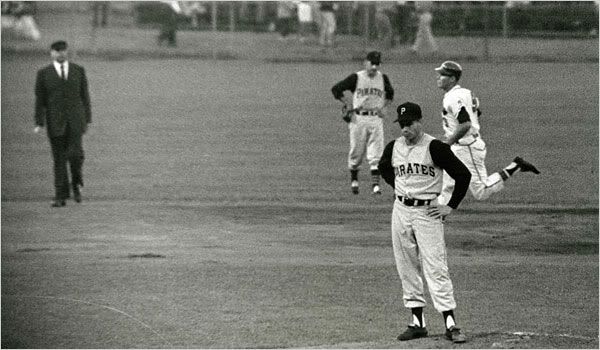
an excerpt from the nytimes of May 24th 2009 The 1959 LMRC team certainly remember this game.
Linked to Haddix’s Perfection by Western Union Ticker Tape, By GERALD ESKENAZI. The ticker tape in the bell jar began to click.
It was May 26, 1959, my first night at The New York Times. I was a $38-a-week copy boy.
I knew that Western Union ticker was important — it was the sports department’s lifeline to baseball games that were increasingly being played at night. Why, they were even playing on the West Coast now.
The yellow ribbon unfurled out of the jar. Usually, it gave bare information, a line score. This time, it read, in shorthand, as I recall: “Harvey Haddix Pittsburgh Pirates pitching perfect game through eight innings.”
Wow! What a business, I thought. What a way to start what was to be a sportswriting career with the paper for more than 40 years.
The game was in Milwaukee, another place that symbolized baseball’s break with its longtime franchise cities. But for me, baseball life, a part of my soul, had ended when the Dodgers left Brooklyn only a couple of years earlier. Here I was, a budding sportswriter, yet disenchanted with the American pastime. Oh, sure, I knew about the Columbia University cultural historian Jacques Barzun’s famous claim, “Whoever wants to know the heart and mind of America had better learn baseball.”
I had come in to work at 7 that night — I was on the 7 p.m. to 3 a.m. shift. But some of the other copy boys had whispered to me that you never had to stay that late, that usually you’d get a slide, be out by 2 in the morning. Even with stuff going on in the West Coast, nothing happened that late at night.
I watched what the other copy boys did: They brought the editors on the copy desk coffee. Like them, I tore off the stories from the Associated Press and the United Press machines. I took the “copy,” the edited stories that the head desk man gave me, and I rolled them up, put them in a plastic tube and sent it up the pneumatic tube toward the composing room. I went up to the composing room for the first edition, a noisy place clanging with metal, where men had ink on their fingers, where Linotype machines from the 1890s were going through some convoluted mechanics to punch out six metal words a minute.
Meanwhile, halfway across America, Haddix, the Kitten, was mowing them down, playing by the same rules they had played by for all the 20th century — 60 feet 6 inches from home, three strikes and you’re out — while I was part of an operation that, similarly, was unchanged over that course of time.
The ticker continued clacking: nine innings, no base runners; 10 innings; 11 innings; 12 innings! No one in the history of baseball had ever had such a performance, and I was there, tethered to the game through Western Union ticker tape.
Harry Meets Casey
LMRC Labeled
The New And Improved LMRC Photo

Thanks to Natalie Sosinsky I got a copy of the John Lamula commemorative book at the April 2nd reunion. It was issued on June 18th, 1960 at the Hotel Statler by the Lower Manhattan Republican Club. On the back flap of the book was this very special picture. We've had other copies of this on the blog, but this is a higher resolution scan.
Frankie Manning
Frankie died on April 28th, just a few weeks shy of his big 95th birthday celebration in New York that occurred this weekend. Above, arguably the greatest swing dance routine ever filmed. He choreographed the routine and appears in it (he's the dancer in the overalls). I'd love to figure out a way to make him an honorary KVer. Maybe if I turn up an early KVer who was part of the 1930's swing dance craze and met him at the Savoy ? An excerpt from an article about him from the nytimes from this past
Honoring the Man Who Helped Make the Lindy Hop, By GLENN COLLINS
“A-one, a-two, a-you know what to do.”
And they certainly did: they danced the Lindy hop, and danced again. Right there in the sacred aisles of the Fifth Avenue Presbyterian Church in Manhattan. They were incited by a series of speakers who repeated this signature catch phrase of the dance legend Frankie Manning during a rollicking three-hour memorial service in his honor Friday, attended by 1,400 Lindy-crazed acolytes who had journeyed there from 33 countries.
Then the celebrants erupted through the church doors onto Fifth Avenue in a New Orleans-style processional — clapping, dancing and sporting umbrellas in the May sun as they were led by a jazz band in singing “Down by the Riverside” and “When the Saints Go Marching In.” They ended up, still sashaying, by the Naumburg Bandshell in Central Park for an afternoon of Lindy competitions.
The memorial was the centerpiece of a five-day celebration of the life of Mr. Manning, who died in April at the age of 94. A proselytizer, teacher and choreographer, Mr. Manning was called the Ambassador of the Lindy Hop and the Master of Swing. He went from the Depression-era Savoy Ballroom in Harlem to Hollywood and Broadway, where he shared a Tony Award in 1989 for best choreography in “Black and Blue.”
“Frankie was the living symbol of the Lindy hop,” said Marv Kellerman, 62, a retired teacher from Kenosha, Wis., who arrived Thursday for the events with a clutch of avid Lindy hoppers from America’s Dairyland.
Mr. Manning was nicknamed “Musclehead” for his powerfully quick acrobatic style, as he hurled his swing partners through show-stopping athletic sequences — and sometimes through space, in what was called his “aerial” or “air step.” Mr. Manning appeared in such Hollywood musicals as “Radio City Revels” (1938) and “Hellzapoppin’ ” (1941), before serving in the Army in World War II.....
After the Lindy craze crashed, Mr. Manning found employment as a post office clerk. But by the time he retired in 1986, a new generation of American and European enthusiasts had rediscovered not only the Lindy, but also Mr. Manning.
He soon became a dapper, charismatic Pied Piper of the Lindy, which he described as “a series of three-minute romances,” insisting that it was a social leveler that swept aside ethnic, class and gender traditions. Many said Mr. Manning’s stamina hardly attenuated with age. “The first time you saw him, he appeared to be an old man,” recalled Silvia Palazzolo, 35, an accountant from Genoa, Italy. “Then the music started and he was 18 years old.”
In 1999, Mr. Manning danced with 85 successive partners at the Roseland Ballroom to celebrate his 85th birthday. It was satisfying, said Alan Sugarman, a producer of that event, since in 1935 Mr. Manning had been excluded from the hall because he was black.. “In 1999, Roseland apologized and put Frankie’s dance shoes on their wall of fame,” he said. During the balmy afternoon Lindy hoppers at the bandshell partied on, continuing the five-day celebration, featuring 15 bands and some 70 events.
Sunday, May 24, 2009
Helen Forrest, born Helen Fogel
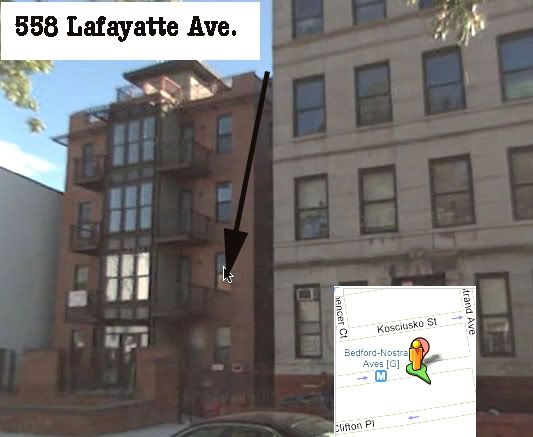
One of the Taking A Chance On Love singers lived at the address in Brooklyn above in 1930. Looks like she overcame a lot in her life.
Obituary: Helen Forrest (April 12, 1917–July 11, 1999)
DURING THE big-band era of the late Thirties and early Forties, six bands were regarded as the most popular and Helen Forrest sang with three of them - Benny Goodman, Artie Shaw and Harry James. She was one of the best of the band singers, and with James she had three million- selling records and countless Top Ten hits, and for two years running was voted the most popular female vocalist in America.
The Second World War years were her peak period, when she and Harry James distilled wartime emotions in song. Forrest's rich sonority and crystal- clear diction allied with James's sinuous trumpet on a ballad like "I Don't Want To Walk Without You" are still acutely resonant of dance halls, brief romances and wistful partings. "Helen was a wonderfully warm and natural singer," wrote George Simon in his 1967 book The Big Bands.
Her recording with James of "I've Heard That Song Before" was in the Top Ten for 20 weeks, and when it passed one and a quarter million in sales Columbia Records announced that it was its biggest seller of all time and that they had run out of shellac (used to make records in those days) because of its popularity.
Forrest and James also had a passionate personal relationship which ended when he married the pin-up movie queen Betty Grable, prompting Forrest to attempt suicide.
Her childhood was not a happy one. She was born Helen Fogel in 1917, in Atlantic City, New Jersey. Her father died shortly afterwards in a flu epidemic, and after moving to Brooklyn her mother married a pimp who turned their home into a brothel. Forrest had three older brothers, one of whom had formed a dance band which played at the marathon dances popular during the Depression, and Forrest left home at 14 to sing with his band.
She lacked formal training but had a facility for picking up music after one hearing, and after some minor dates with other bands she was hired to sing commercials on the radio. In 1935 she had a regular slot on the CBS show Blue Velvet Hour, billed as "Bonnie Blue, the Blue Lady of Song" and singing with the trumpeter Bunny Berigan, then spent two years singing in the Madrillon Club in Washington.
Her break came in 1938 when Artie Shaw, whose swing band had become one of the most famous in the country, hired her to replace his vocalist Billie Holiday, who was shortly to leave. "She was so wonderful to me," said Forrest later of Holiday. "She was always trying to help."
A champion of civil rights, Forrest admired leaders like Shaw and Goodman for working with black musicians despite strict segregation in many towns, and in 1940 she broke tradition by making a record with Lionel Hampton and his all-black orchestra. Forrest made 41 recordings with Shaw, including such hits as "I'm in Love with the Honorable Mr So and So", "They Say" and "All the Things You Are".
In Down Beat's 1939 poll, Forrest was placed fifth in the list of female vocalists, behind Ella Fitzgerald, Mildred Bailey, Billie Holiday and Bea Wain and just in front of Jimmy Dorsey's vocalist Helen O'Connell, with whom she would often be confused. "I'm always being asked to sing `Tangerine' or `Green Eyes'," she later said, "and I bet she gets asked to sing my hits."
In 1939 Forrest married Al Spieldock, a drummer with the Madrillon band, but her work with Shaw kept them apart a lot. "We never had a real marriage," said Forrest. The same year, she appeared with Shaw's band in several musical shorts, and in MGM's feature film Dancing Co- Ed, though she did not sing in the film. At the end of the year, 15 months after Forrest joined his band, Shaw broke the unit up, temporarily retiring from the business, and Forrest successfully auditioned for Benny Goodman, "a great musician, but the most unpleasant person I ever met in music. He never said one kind thing to me about my singing, but then he never said one kind word to anyone about anything."
With Goodman, the singer had her first million-seller, "Taking a Chance on Love", one of 53 songs she recorded with him including "Perfidia", "It Never Entered My Mind", "The Man I Love" and "More Than You Know". But Forrest was never happy with Goodman:
The band I joined was sensational, but few special arrangements were written for me. I sang choruses, and made myself fit to the music. Benny used to drive me crazy by "noodling" behind me on clarinet while I sang.
In August 1941 Forrest quit the orchestra "to avoid having a nervous breakdown" (Goodman replaced her with a then unknown Peggy Lee) and three months later joined the Harry James band, with whom she was to reach the peak of her profession. "I contacted Harry on a hunch. I loved the way he played that trumpet, with that Jewish phrasing, and I thought I'd fit right in with the band." James had recently added strings to his band, and had a sensational hit with his instrumental recording of "You Made Me Love You", making him "the biggest thing in the business".
In successive years, 1942 and 1943, Forrest was voted the best female vocalist of the country in the Down Beat poll, ahead of Helen O'Connell, Anita O'Day, Peggy Lee, Jo Stafford, Dinah Shore, Billie Holiday, Marion Hutton, Mildred Bailey, Lena Horne and Ella Fitzgerald. (Frank Sinatra, Bing Crosby and Bob Eberly were the top male singers at this time.)
Though after divorcing Spieldock she married and divorced twice more, Forrest maintained that James was her only true love. Forty years later, she was to write, "I've had three marriages and I never married Harry, but he was the love of my life. Let's face it, I still carry a torch for the so-and-so." Leaving his band to freelance, Forrest signed a recording contract with Decca and was co-starred with Dick Haymes on a radio show Here's to Romance. Her first Decca disc, "Time Waits For No One", reached second place on the Hit Parade, and the radio show achieved top ratings.
Haymes was also contracted to Decca, and from 1944 to 1946 the pair recorded 18 duets, 10 of them reaching the Top Ten. Particularly successful were their versions of "Long Ago and Far Away", "It Had To Be You", "Together", "I'll Buy That Dream", "I'm Always Chasing Rainbows" and "Oh, What It Seemed To Be".
During the last years of the decade Forrest headlined at theatres and clubs with great success, but the music scene was gradually changing and, though some former band singers went on to even greater fame, notably Peggy Lee, Doris Day, Ella Fitzgerald and (after a period out of favour) Frank Sinatra, others like Forrest, Helen O'Connell and Marion Hutton faded from the limelight.
In 1955 Forrest joined Harry James again for a record album, Harry James in Hi-Fi, which was a best-seller, but her solo career waned as rock'n'roll flourished. Her manager Joe Graydon said, "She was at an `in-between' stage in her career. Not young enough to be current. Not old enough to be nostalgia." She continued to make occasional records and perform in concerts - she was performing at Lake Tahoe with Frank Sinatra Jnr in 1963 when he was kidnapped - but work was sporadic until 1977, when a television reunion of James, Haymes and Forrest on the Merv Griffin Show led to a touring production called The Fabulous 40s (1978), followed in 1979 with a similar revue entitled The Big Broadcast of 1944.
In 1980, six months after Haymes died, Forrest suffered a severe stroke, but recovered to perform and record again, and in 1983 she starred with Vivian Blaine and Margaret Whiting in a stage revue, A Tribute to Dick Haymes. She continued to perform until the early Nineties, when rheumatoid arthritis began to affect her vocal chords.
"I live for today," said Forrest, but it is nice sometimes to look back to yesterday. We did not know that we were living through an era - the Big Band Era - that would last only 10 years or so and be remembered and revered for ever.
In her autobiography she stated that the most dramatic moments of her life were crowded into just three years, from 1941 to 1943:
That was when the music of the dance bands was the most popular music in the country and I was the most popular female band singer in the country and Harry had the most popular band in the country. It didn't last long, but it sure was something while it lasted. Everyone should have something like it at least once in their lives. I'm grateful I did.
Taking A Chance On Love: Hazel Scott
Hazel Dorothy Scott (June 11, 1920 – October 2, 1981) was a jazz and classical pianist and singer. She was born in Port of Spain, Trinidad and Tobago and raised in New York City from the age of four. She performed extensively on piano as a child, then trained at the Juilliard School. She appeared in the production Priorities of 1942 and performed numerous times at the famed Carnegie Hall.
Her motion picture career included the films Something To Shout About, I Dood It, Broadway Rhythm, The Heat's On, and Rhapsody in Blue.
She was known for improvising on classical themes and also played boogie-woogie, blues, and ballads. She was the first woman of color to have her own television show, The Hazel Scott Show, which premiered on the DuMont Television Network on July 3, 1950. However, due to her public opposiiton to McCarthyism and racial segregation, the show was canceled in 1950 when she was accused of being a Communist sympathizer; the final broadcast was September 29, 1950.Above: Hazel's address in 1930
Her album Relaxed Piano Moodson the Debut Record label with Charles Mingus and Max Roach, is the album most highly regarded by critics today.
She was married to U.S. Congressman Adam Clayton Powell, Jr. from 1945 to 1956, by whom she had one child before their divorce, Adam Clayton Powell III.
She died of pancreatic cancer at the age of 61 on October 2, 1981 at Mount Sinai Medical Center in New York City.
Saturday, May 23, 2009
Taking A Chance On Love: Jane Monheit
Jane's from Long Island and now lives in Manhattan
Jane Monheit was raised in Oakdale, New York on Long Island. She began singing professionally while attending Connetquot High School in Bohemia,N.Y. from which she graduated in 1995. As a child, Jane spent her summers as a student at the Usdan Center For the Creative and Performing Arts, and is a recipient of their distinguished alumna award. As a student at the Manhattan School of Music in New York City, she studied voice under Peter Eldridge. Jane graduated with honors from the Manhattan School of Music in 1999, earning a BA in music and receiving the William H.Borden Award for outstanding accomplishment in Jazz. Along with Tierney Sutton and Roberta Gambarini, she was a semi-finalist in the Thelonious Monk Institute of Jazz Vocal Competition in 1998, losing to Teri Thornton. She and her husband, drummer Rick Montalbano, currently reside in New York. They have one child.
Labels:
erogenous zone,
swing,
taking a chance on love
Taking A Chance On Love: Benny Goodman and Helen Forrest
There's a guy from 14 Monroe who I know who's currently taking a chance. Good luck kid
A great rendition of a great song by Vernon Duke and John LaTouche. It's sung here by one of the best of the big band singers Helen Forrest. Hymie Schertzer and Art Rollini are visible at approximately the 38 second mark of the video
Here I go again
I hear those trumpets blow again
All aglow again
Taking a chance on love
Here I slide again
About to take that ride again
Starry eyed again
Taking a chance on love
I thought that cards were a frame-up
I never would try
Now I'm taking that game up
And the ace of hearts is high
Things are mending now
I see a rainbow blending now
We'll have a happy ending now
Taking a chance on love
Here I slip again
About to take that trip again
I got that grip again
Taking a chance on love
Now I prove again
That I can make life move again
I'm in a groove again
Taking a chance on love
I walk around with a horseshoe
In clover I lie
And brother rabbit of course you
Better kiss your foot good-bye
On that ball again
I'm riding for a fall again
I'm gonna give my all again
Taking a chance on love
Life Goes To A Party: Benny Goodman
Many of the images are from Life Magazine's 1937 spread on Benny The tune, named "Life Goes To a Party" gained its inspiration from the article and was a highlight from the historic 1938 Carnegie Hall Concert
Who's Almost Who In Knickerbocker Village History: Art Rollini
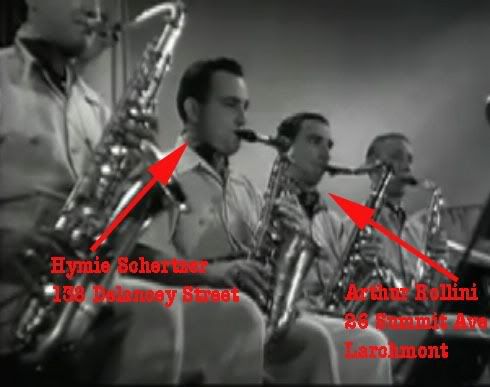
Above: Schertzer and Rollini playing in Benny Goodman's band from the previous post
We've mentioned Hymie Schertzer's LES connection beforeRollini grew up in Larchmont, a little over a mile from where KVer Mark now lives and maybe even closer to where his Larchmont native wife grew up. Yes, I know it's a stretch, I just wanted an excuse to play Benny Goodman.
A fine tenor-saxophonist, Arthur Rollini was largely overshadowed by the more distinctive stylists of the 1930s and was essentially a journeyman most famous for his association with Benny Goodman during the clarinetist's rise to fame. The younger brother of the great Adrian Rollini (the master of the bass sax), Arthur started playing music in New York in the late 1920s, attended Columbia University and worked with The California Ramblers. He spent most of 1929 in London, playing with Fred Elizalde's Orchestra. Arthur freelanced in New York for the next few years, recording with his brother and working with Bert Lown, The California Ramblers, Paul Whiteman and George Olsen. He was a member of the Benny Goodman Orchestra from 1934-39, occasionally getting solos and contributing to Goodman's ride to great success. After leaving Goodman, Arthur was with the orchestras of Richard Himber (1940-41) and Will Bradley (1941-42) before becoming a longtime member of the staff at ABC. Unfortunately, Arthur (who never led his own record session) played very little jazz in later years, although he appeared on a record date with Brad Gowans in 1946. His 1987 autobiography, Thirty Years with the Big Bands, is highly rated. ~ Scott Yanow, All Music Guide
Benny Goodman
If you're not listening to the big 100th year celebration of Benny's birth on wkcr, you're missing something
There's a kv connection but not strong one
KV's Mad Man
Watch mad.men.s01e06.01 in Entertainment | View More Free Videos Online at Veoh.com
There's a KV Colonel, a couple of KV Captains, KV Dulcimer Man, KV Prof, KV Therapist, KV artists, KV designers, a KV "rabbi", a KV altar boy, KV actors and actresses, KV authors, KV CCTV Guy, KV Hebrew Hammer, KV Koppla, KV Teamster, KV "Friends of Sopranos," and on and on. I recently discovered we have among us a former KV "Mad Man" of the advertising exec variety. More to come on this
The Princess And The Pea


A new book by Kver Rachel Isadora
5.0 out of 5 stars I adore this book, January 27, 2009
By Jenifer Grady "lusciousliterate" (Chicago, IL) - I've searched, hoped and contacted publishers about an African-American version of the Princess and the Pea. This book is so much more than that. It's beautiful and the story is rich. It's not just a typical story with the characters colored in brown. It's got culture in the characters, the design, and the content. I am truly thankful to Ms. Isadora for producing such a lovely book.
5.0 out of 5 stars African American Princess, January 2, 2009
By Jupiter Reader (Jupiter, Florida) -
With so much emphasis on princesses these days, this story is the perfect foil for the wan pink varities. In a riot of color, this queen-to-be hops upon a bed of many quilts in African prints only to find the bed unsuited to a good night's sleep and hence wins the hand of the prince. Old tale, new award-winning graphics.
5.0 out of 5 stars Check out this book, October 24, 2008
By Street Guy Professor (New York City) -
This is a very clever book and I found the style captivating. It is interesting how Ms. Isadora combines the African theme and the fun of the story all packaged in a classic story. Mr. Andersen would approve!
RIP Nat Hollander
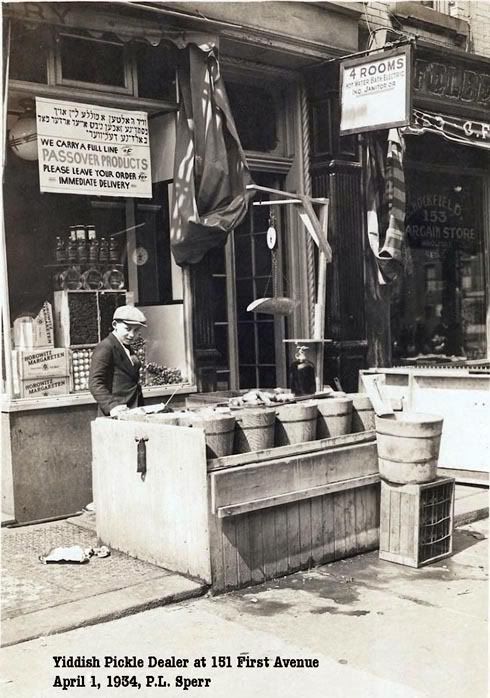
I think a moment of silence should be observed for the passing of the last of the great picklemen
These comments were left on the blog on a November, 2007 post
mblitz said...
May 19th 2009
The correct name of the gentleman in the picture is Nathan (Nat) Hollander. How do I know this you ask? I am his grandson, Michael Blitz. I am very sorry to inform you that my grandfather passed away yesterday, May 18th 2009. We lost the last of the great picklemen. My great granfather Louis Hollander started selling pickles and produce in 1903 with a horse drawn carriage. And yes it is true that Izzy Guss got his start in the business from my great grandfather. My father Bert Blitz and I were also in the pickle business for many years. Our mistake was getting involved with Tim Baker and his father. Tim has a track record of doing wrong to people. He should have learned to be a gentleman like my grandfather was.
May 19, 2009 11:43 AM
Anonymous said...
Nathan Hollander was an amazing man and that is his face in that picture. We will miss him very much.
Below I found Nat and his father Louis in the 1930 census. They live at 128 Goerck Street
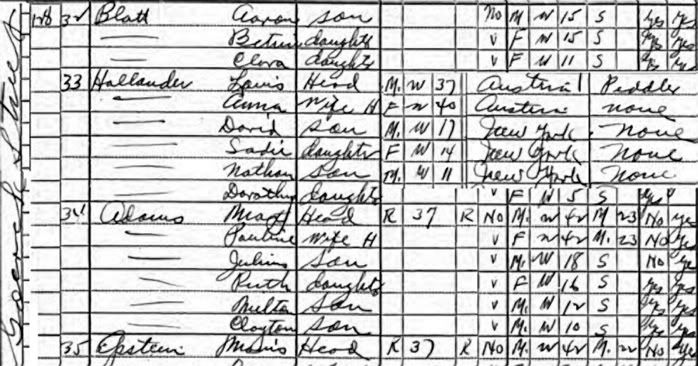
Thursday, May 21, 2009
Get Happy
Maybe it won't be a cruel summer. The Yanks have won 9 in a row, but am I risking bad luck by being happy. Such is the dilemma of the kennahora
Forget your troubles
Come on get happy
You better chase all you cares away
Shout halleujah
Come on get happy
Get ready for the judgement day
The sun is shining
Come on get happy
The lord is waiting to take your hand
Shout halleuja
Come on get happy
We're going to the promised land
We're heading across the river
Wash your sins away in the tide
It's all so peaceful on the other side
Forget your troubles
Come on get happy
You better chase all you cares away
Shout halleujah
Come on get happy
Get ready for the judgment day
Forget your troubles
Come on get happy
You better chase all you cares away
Halleujah
Come on get happy
For the judgment day
The sun is shining
Come on get happy
The lord is waiting to take your hand
Shout halleujah
Come on get happy
We're going to the promised land
We're heading across the river
Wash your sins away in the tide
It's quiet and peaceful on the other side
Forget your troubles
Get happy
Your cares fly away
Shout halleujah
Get happy
Get ready your judgment day
Come on get happy
Chase your cares away
Shout halleujah
Come on get happy
Get ready for the judgment day
The sun is shining
Come on get happy
The lord is waiting to take your hand
Halleujah
Come on get happy
We're going to the promised land
We're heading across the river
Wash your sins away in the tide
It's all so peaceful on the other side
Shout Halleujah
Come on get happy
You better chase all your cares away
Shout Halleujah
Come on get happy
Get ready
Friday, May 15, 2009
From The 70's: Disco Explained
Disco
Since Knick Knac puts us back in the 70's I thought this might be appropriate
from The Big Book of the 70's
Publish at Scribd or explore others:
Since Knick Knac puts us back in the 70's I thought this might be appropriate
from The Big Book of the 70's
Thursday, May 14, 2009
Wednesday, May 13, 2009
Tour de Force Acting Scene By John Palumbo
A tour de force scene from a great film, Bronx Paradise Caution, strong language. Here Knickerbocker Village's own "son" John Palumbo, playing John Manfredi, goes toe to toe with Soprano star Arthur Nascarella, who portrays his father Tony Manfredi. Also in the scene is great work by Lisa Regina as his sister Tina. The film will be featured at the upcoming Staten Island Film Festivalon June 4th and 5th
Tuesday, May 12, 2009
The Daughters Of Stewie Brokowsky
found this on blinx video. From June 30, 2008. Wendy Rogers and Jessica Brokowsky created a fundraiser for the Leukemia and Lymphoma Society in honor of their dad Stewie Brokowsky. It is called Meet Ur Match. They appeared on the Jim and Jade Show (Jim Berry and Jade Alexander) on CBS4 in South Florida.
I received an email from Stewie's sister Sharon which provided the impetus for discovering this treat. Stewie would be so proud of these kids.
DAVID:
I DO NOT KNOW IF YOU REMEMBER ME - I AM SHARON BROKOWSKY - STEWIE'S SISTER. MY COUSIN LYNN STEINBERG SCHAEFER WAS AT THE REUNION AND TOLD ME TO GO ON LINE TO SEE THE PICTURES I WISH I COULD HAVE BEEN THERE. SHE SAID SHE HAD A WONDERFUL TIME AND, OF COURSE, EATING AT FORLINI'S WAS ALWAYS THE GREATEST. IF STEWIE AND LENNY WOULD HAVE BEEN ALIVE, I KNOW THEY WOULD HAVE BEEN THERE. KV WAS I THINK THE BEST TIMES OF OUR LIVES.
MAYBE ONE DAY I'LL GET BACK THERE.
SHARON BROKOWSKY
There's a link now for this worthy charity in the middle sidebar for
The Leukemia & Lymphoma Society
Donor Services
P.O. Box 4072
Pittsfield, MA 01202
Subscribe to:
Posts (Atom)

